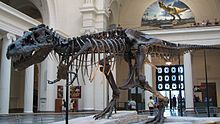Please, please, please keep my neolib co-conspiritors in power.
Even if you hate me, please don’t take Labour over the cliff edge
by Tony Blair, The Guardian
Wednesday 12 August 2015 13.30 EDT
The Labour party is in danger more mortal today than at any point in the over 100 years of its existence. I say this as someone who led the party for 13 years and has been a member for more than 40. The leadership election has turned into something far more significant than who is the next leader. It is now about whether Labour remains a party of government.
Governments can change a country. Protest movements simply agitate against those who govern. Labour in government changed this country. I don’t just mean the minimum wage, civil partnerships, massive investment in public services, lifting millions out of poverty, or peace in Northern Ireland. I mean we changed the nation’s zeitgeist. We forced change on the Tories. We gave a voice to those who previously had none. We led and shaped the public discourse. And, yes, governments do things people don’t like, and in time they lose power. That is the nature of democracy.
But in a thousand ways, small or large, which anyone in government can describe, being in power can make a difference to those we represent. The reality is that in the last three months the Labour party has been changed. Its membership has virtually doubled. Some will have joined in shock at the election result; many more are now joining specifically to support the Jeremy Corbyn campaign; some with heavy organisation behind them. These last two groups are not many in number, relative to the population. But, relative to the membership of a political party, they’re easily big enough to mount a partial takeover. The truth is they don’t really think it matters whether Labour wins an election or not. Some actually disdain government.
…
The unions in the 1980s were, by a majority, a force for stability and sense. There were constituencies so solidly Labour that nothing could shake them from their loyalty. The party that assembled after the 1983 defeat knew its direction. Maybe we didn’t know how far or how fast, but we knew, and the new leader Neil Kinnock knew, that we had to put aside the delusion that we had lost two elections because we weren’t leftwing enough and start to modernise. And our objective was to return to government.What we’re witnessing now is a throwback to that time, but without the stabilisers in place. The big unions, with the exception of the most successful in recent times, USDAW, are in the grip of the hard left. And the people do not have that same old-time loyalty.
If Jeremy Corbyn becomes leader it won’t be a defeat like 1983 or 2015 at the next election. It will mean rout, possibly annihilation. If he wins the leadership, the public will at first be amused, bemused and even intrigued. But as the years roll on, as Tory policies bite and the need for an effective opposition mounts – and oppositions are only effective if they stand a hope of winning – the public mood will turn to anger. They will seek to punish us. They will see themselves as victims not only of the Tory government but of our self-indulgence.
…
I don’t doubt that his campaign has sparked interest. Why wouldn’t it? There is something fascinating about watching a party wrestle with its soul. It doesn’t mean it is a smart place to be. And, yes, some young people will be enthused. Many Young Labour members were enthused in 1997 and are enthused by modernising Labour policy today.The tragedy is that immense damage has already been done by a policy debate that, with some honourable exceptions, is defined by its irrelevance to the challenges of the modern world. We should be discussing how technology should revolutionise public services; how young people are not just in well-paid, decent jobs but also have the chance to start businesses that benefit their communities; how Britain stays united and in Europe; what reform of welfare and social care can work in an era of radical demographic change.
Pretty please?
The tears of sell-out pragmatists delight me.



